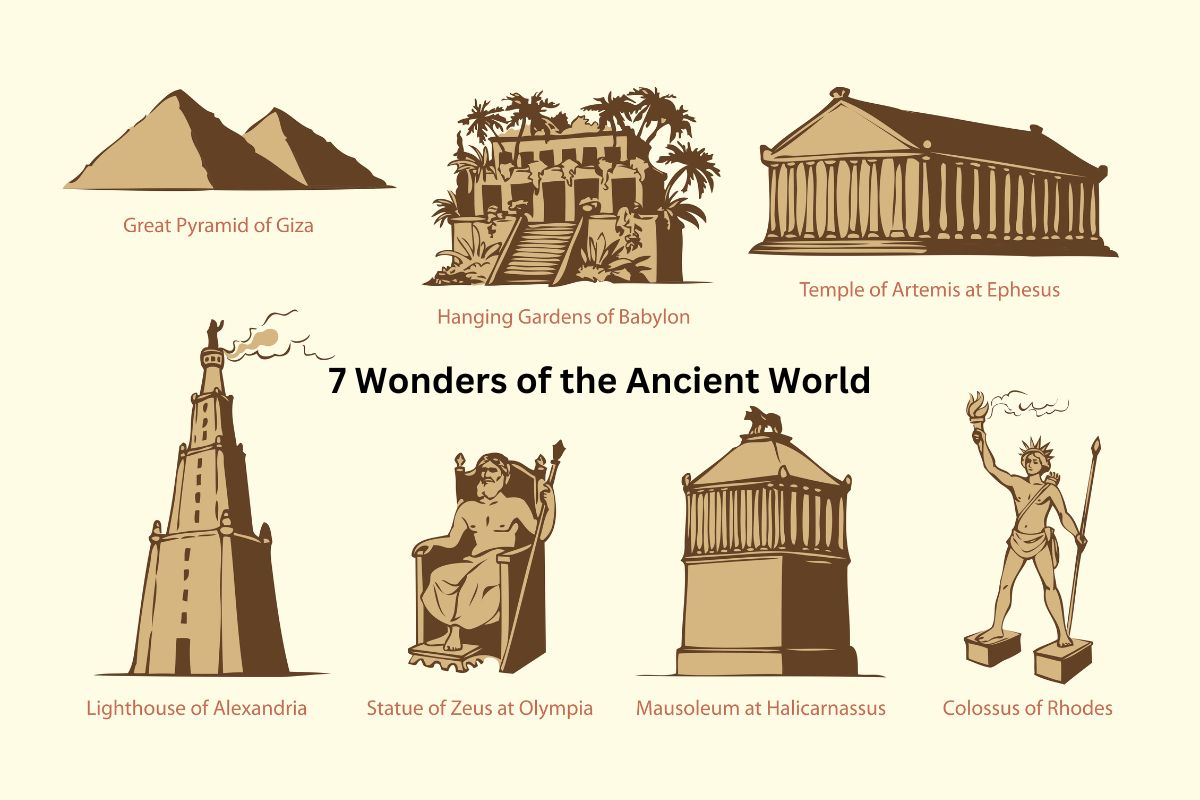The Seven Wonders of the Ancient World represent some of the most extraordinary examples of human architecture and engineering that were created by various ancient civilizations.
These once iconic landmarks include:
- The Great Pyramid of Giza in Egypt, the only wonder that is largely intact today.
- The Hanging Gardens of Babylon, which were said to be a spectacular ascending series of gardens.
- The Statue of Zeus at Olympia in Greece, a colossal idol of the king of the Greek gods.
- The Temple of Artemis at Ephesus, a magnificent temple dedicated to the Greek goddess of the hunt.
- The Mausoleum at Halicarnassus, an impressive tomb in what is now Turkey.
- The Colossus of Rhodes, a huge statue of the Greek sun god Helios.
- The Lighthouse of Alexandria in Egypt, one of the tallest man-made structures for many centuries.
These wonders were recorded by ancient historians, and their grandeur and magnificence have captivated our imaginations ever since.
However, apart from the Great Pyramid of Giza, all have been lost to time and no longer exist in their original form.
Also Read: Ancient Civilizations Timeline
Their influence continues to inspire modern architecture and continues to remind us of the enduring power of human creativity and ambition.
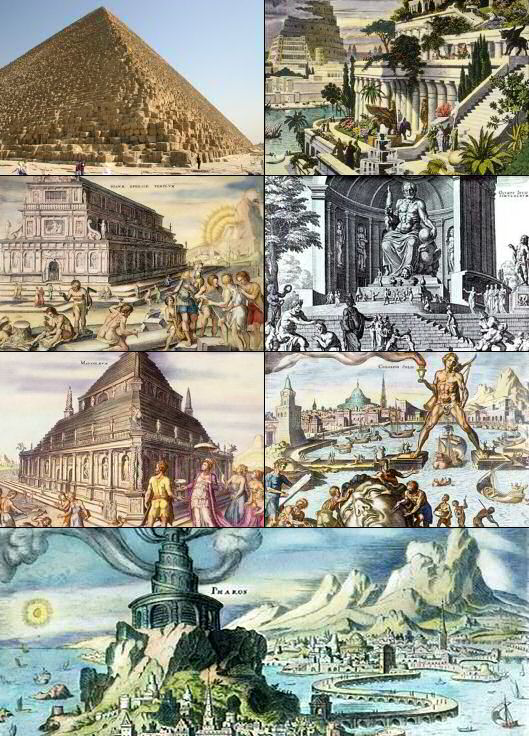
| Wonder | Location | Description | Status |
|---|---|---|---|
| The Great Pyramid of Giza | Giza, Egypt | A tomb for Pharaoh Khufu, was the tallest man-made structure for over 3,800 years | Largely Intact |
| Hanging Gardens of Babylon | Babylon, Iraq | A lush, mountain-like garden, existence is disputed | Lost |
| Statue of Zeus at Olympia | Olympia, Greece | A colossal statue dedicated to Zeus, built by the sculptor Phidias | Lost |
| Temple of Artemis at Ephesus | Ephesus, Turkey | A magnificent temple dedicated to Artemis, the Greek goddess of the hunt | Lost |
| Mausoleum at Halicarnassus | Halicarnassus, Turkey | An impressive tomb built for Mausolus, a Persian satrap, and his wife Artemisia | Lost |
| Colossus of Rhodes | Rhodes, Greece | A giant statue of the Greek god Helios, one of the tallest statues of the ancient world | Lost |
| Lighthouse of Alexandria | Alexandria, Egypt | One of the tallest man-made structures for centuries, served as a beacon for ships | Lost |
Seven Wonders of the Ancient World
1. The Great Pyramid of Giza
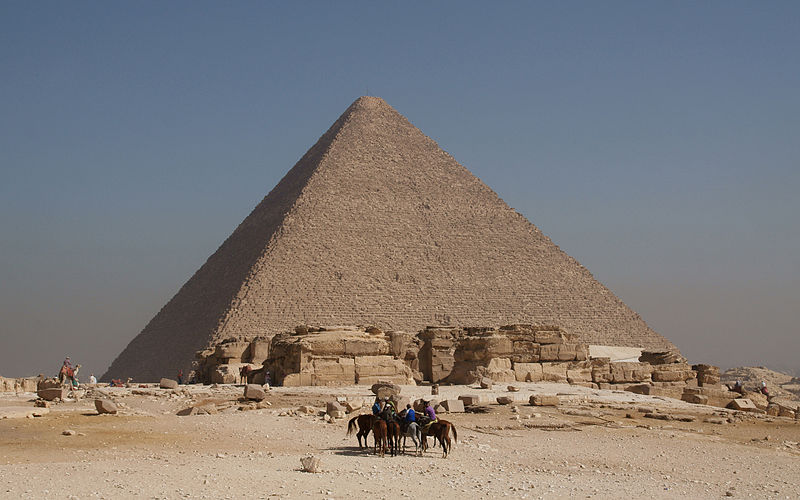
The Great Pyramid of Giza is also known as the Pyramid of Khufu or the Pyramid of Cheops (Khufu was the pharaoh’s name in the ancient Egyptian language while Cheops is the Greek translation).
It was built as a tomb for the Egyptian Pharaoh Khufu, who reigned during the Fourth Dynasty of the Old Kingdom of Egypt.
The construction took place over a 20-year period, concluding around 2560 BC. With an original height of 481 feet (146.5 meters), it was the tallest man-made structure in the world for over 3,800 years until the completion of the Lincoln Cathedral in England in the 14th century.
The pyramid is an incredible feat of engineering, consisting of 2.3 million blocks of limestone and granite, some weighing as much as 80 tons.
Despite centuries of study, many of the techniques involved in the pyramid’s construction remain mysterious, making it a subject of ongoing scientific and historical inquiry.
2. Hanging Gardens of Babylon
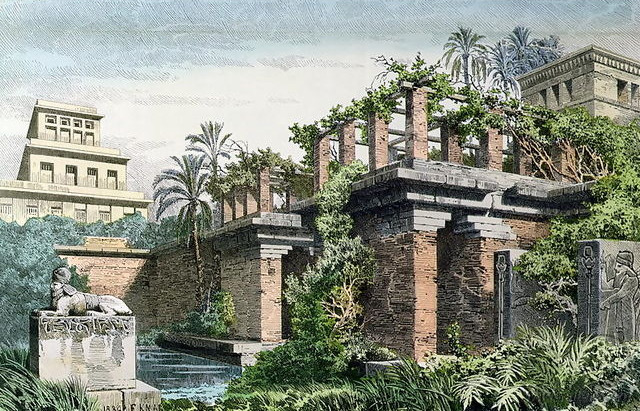
The Hanging Gardens of Babylon are described as an ascending series of tiered gardens containing a wide variety of trees, shrubs, and vines, resembling a large green mountain constructed of mud bricks.
It’s said that they were built by Nebuchadnezzar II, the king of the Neo-Babylonian Empire, for his Median wife, Queen Amytis, because she missed the green hills and valleys of her homeland.
The gardens were supposedly located in the ancient city-state of Babylon, near present-day Hillah, in Iraq. However, there is some controversy as to whether they existed at all.
Despite ancient accounts, no definitive archaeological evidence of the gardens has been found, leading some historians to question the accuracy of the historical record.
The gardens are said to have been destroyed by several earthquakes after the 2nd century BC. Even without confirmation of their existence, the Hanging Gardens of Babylon have had a lasting impact on art and culture, serving as a motif in poetry and paintings, symbolizing a place of idyllic beauty in the ancient world.
3. Statue of Zeus at Olympia

The Statue of Zeus at Olympia was a colossal statue of the Greek god Zeus, the king of the gods in ancient Greek religion. This statue was housed in the Sanctuary of Zeus at Olympia, western Greece.
Crafted by the renowned ancient Greek sculptor Phidias around 435 BC, the statue was about 42 feet (13 meters) tall and depicted Zeus seated on a majestic throne.
Zeus’s skin was composed of ivory while his robes and sandals were made of gold. In his right hand, the statue held a small statue of Nike, the goddess of victory, and in his left was a scepter topped with an eagle.
The statue was praised for its exquisite craftsmanship, representing the height of Classical Greek sculpture. Unfortunately, it was lost and destroyed during the 5th century AD, possibly in a fire.
4. Temple of Artemis at Ephesus
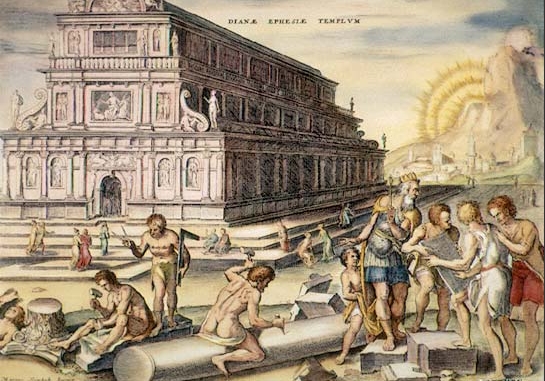
The Temple of Artemis, also known as the Artemision, was a Greek temple dedicated to the goddess Artemis, located in Ephesus (near the modern town of Selçuk in present-day Turkey).
Constructed in the 6th century BC, the temple was a marvel of marble construction. It was built and rebuilt at least three times in its history, with the most magnificent version being the one constructed by the architect Chersiphron and his son Metagenes.
The temple was famous for its size and for the works of art it contained. Measuring 425 feet (130 meters) long and 225 feet (69 meters) wide, it was more than twice the size of the Parthenon in Athens.
It was decorated with bronze statues sculpted by renowned Greek sculptors and was considered an important center of commerce, attracting merchants from all over the ancient world.
Like the Statue of Zeus, the Temple of Artemis is also lost. It was destroyed in a raid by the Goths in 268 AD, and despite attempts to rebuild it, the temple fell into disrepair and was eventually abandoned.
5. Mausoleum at Halicarnassus

Located in what is now the city of Bodrum in Turkey, the Mausoleum at Halicarnassus was an impressive tomb built for Mausolus, the Persian satrap of Caria, and his wife Artemisia II. The structure was constructed in the 4th century BC and stood approximately 148 feet (45 meters) high.
The Mausoleum was built by Greek architects and was adorned with decorative reliefs and sculptures created by four famous Greek sculptors:
- Scopas
- Leochares
- Bryaxis
- Timotheus
The structure had a rectangular base, a middle section with thirty-six Ionic columns, and a stepped, pyramidal roof.
The term “mausoleum” is actually derived from Mausolus’ name and has come to be used generically for any grand tomb. The Mausoleum was damaged by a series of earthquakes and was completely destroyed by the 15th century.
6. Colossus of Rhodes
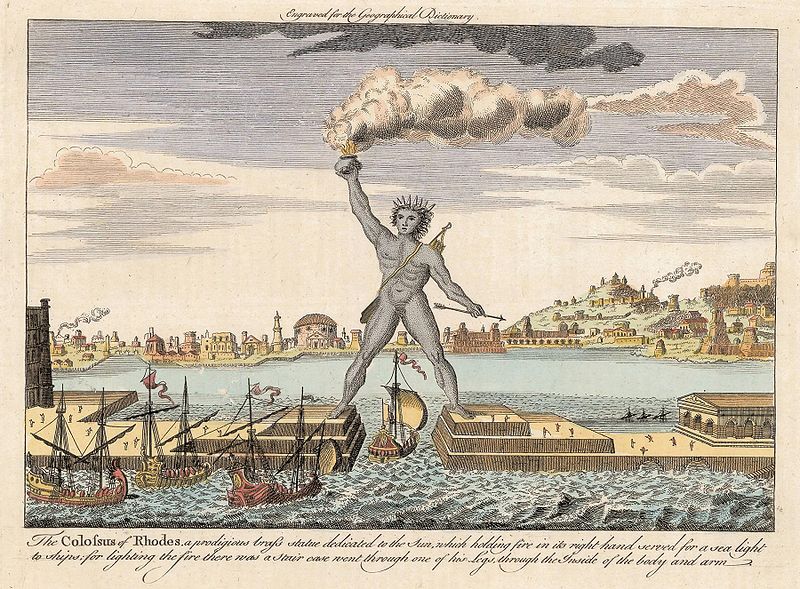
The Colossus of Rhodes was a statue of the Greek sun god Helios, erected on the Greek island of Rhodes by Chares of Lindos between 292 and 280 BC. Standing at approximately 110 feet (33 meters) high, it was one of the tallest statues of the ancient world.
The statue was constructed to celebrate Rhodes’ victory over the ruler of Cyprus, who had unsuccessfully besieged Rhodes in 305 BC. Despite popular depictions of the statue straddling the harbor of Rhodes, it most likely stood on a plinth on the eastern promontory of the city.
Unfortunately, the statue stood for only 56 years before it was toppled by an earthquake in 226 BC. Its ruins lay on the ground for over 800 years and were still a tourist attraction until they were sold off by invaders.
7. Lighthouse of Alexandria
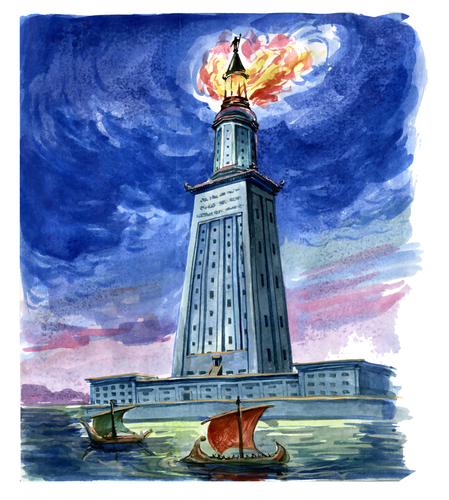
The Lighthouse of Alexandria, also known as the Pharos of Alexandria, was a tall tower built by the Ptolemaic Kingdom between 280 and 247 BC on the island of Pharos in Alexandria, Egypt.
It was one of the tallest man-made structures in the world for many centuries, estimated to have been between 120 and 137 meters (394 and 449 feet) tall.
The lighthouse was built with large blocks of light-colored stone and was made up of three stages: a lower square section with a central core, a middle octagonal section, and a circular section at its top.
On top of the tower was a mirror believed to reflect sunlight during the day; a fire was lit at night.
The lighthouse served as both a landmark and a functional lighthouse, guiding mariners into the bustling port of Alexandria, one of the busiest in the ancient world.
The Lighthouse of Alexandria was severely damaged by three earthquakes between the 10th and 14th centuries and had completely disappeared by the late 15th century. The site where it once stood has been rediscovered and is currently an underwater archaeological site.
The enduring allure of the human spirit to create and innovate is encapsulated in the grand structures known as the Seven Wonders of the Ancient World.
Ranging from the surviving Great Pyramid of Giza to the enchanting Hanging Gardens of Babylon that are lost to time, these icons of ancient architectural and engineering prowess demonstrate our ancestors’ impressive achievements.
Even as most of these wonders have succumbed to the passage of time, their legacies continue to captivate our imagination, inspiring generations with their sheer majesty and grandeur. Indeed, the 7 Wonders of the Ancient World continue to shape our understanding of human resilience and the limitless potential of design and construction.
